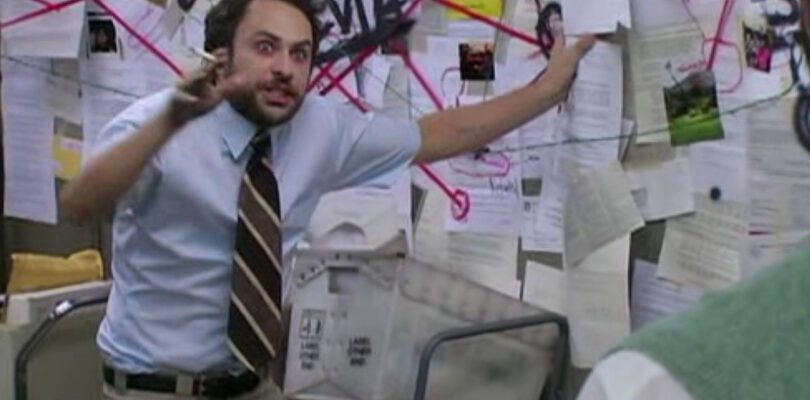WARNING: MASSIVE SPOILERS INBOUND! Seriously, some of these entries have endings and important plot points described in full detail. Just so you know…
To first have their lore and canon, video games need to have working theories. The keyword here is “working”, as game development across the decades have seen its share of conspiratorial content—either created by fans or force-fed by companies themselves—that would make any temperature-room IQ mind go “huh” in a heartbeat.
As it turns out, though, some of these theories were actually true (or, at the very least, had so many gullible people believing it that developers eventually gave up and “yeah-sured” their way out of any interview).
Note: Affiliate Disclosure: At PlayRatedGames, our content is made possible by our readers. If you purchase a game or product through links on our site, we may receive a small commission. This support helps us continue publishing honest, independent reviews. Our recommendations are based solely on what we believe offers real value to players — never influenced by affiliate partnerships.
So we scoured the world, listened to secretive audio files and investigated several reports obtained in shady, dark alley deals and…found nothing. Giving that up, we just scoured the internet for some of gaming’s most notorious lies that turned out to be true (and some that were, y’know, lies all along). Read on to find out more:
Video game theories that were (and some that were not) true
Lies! LIES, I TELL YOU!
- Super Mario Galaxy: Beyond Hell Valley
- Monster Hunter: Deviljho eats his own tail
- Final Fantasy VII: Aerith is alive (yes, again!)
Speak your TRUTH, brother!
- Silent Hill 2: Mary’s body is in the car
- Far Cry 2’s Jackal is actually the previous game’s hero, Jack Carver
- The military tried to recruit you through video games
Also, Poké-WTF???
Lies! LIES, I TELL YOU!
Super Mario Galaxy: Beyond Hell Valley
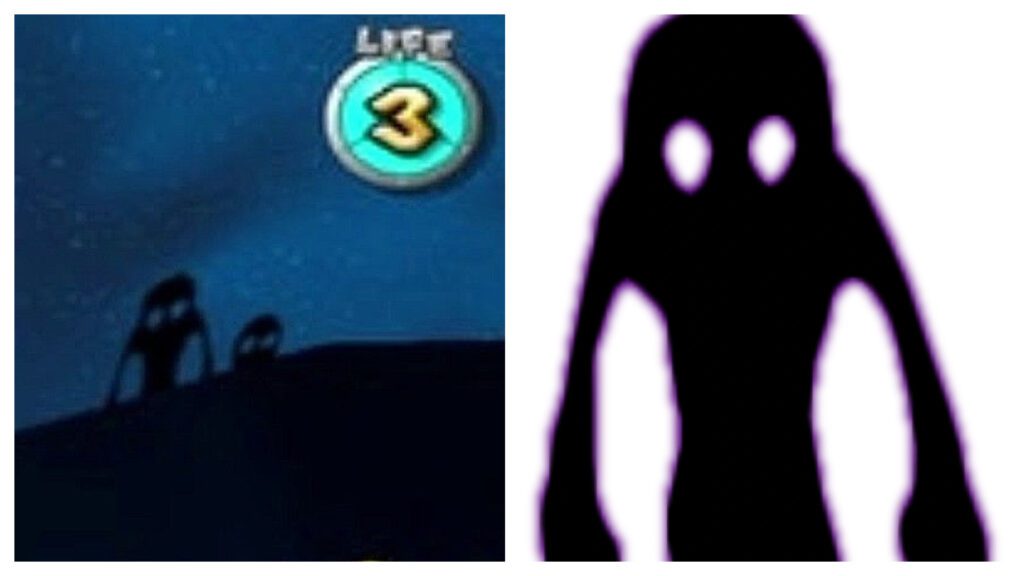
Some people claim it’s a secret level that never came to be, some people claim dark magic’s afoot, but 2007’s Super Mario Galaxy is no stranger to weird video game theories. Right there, atop a mountain in the Shiverburn Galaxy, are three dark, seemingly humanoid figures, unmoving. Regardless of where you look at them from, they’ll always face you, silently, waiting…?
Keen-eyed gamers with a lot more talent and time than me took it upon themselves to datamine through the game’s files, eventually discovering that these figures are referred to as “HellValleySkyTrees”—which, you’ll have realized by looking at the pictures above, absolutely does not remind you of any tree known to man.
Nintendo, being Nintendo, never really commented on this, so let’s chalk it up to something the publisher thought about, but never intended to use.
Monster Hunter: Deviljho eats its own tail
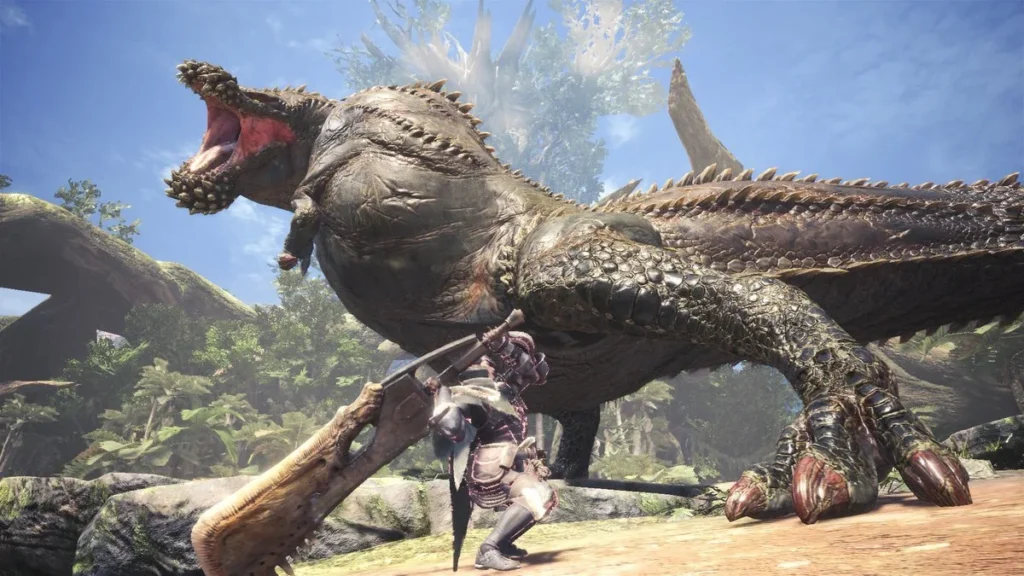
In a fabulous display of gullible stubbornness, the Monster Hunter community allowed itself to believe—to this date—that Deviljho, one of Capcom’s franchise’s most infamous monsters to hunt, is to voraciously hungry all of the time it will eat its own to feed: no, not “its own children” or anything: it’s own tail.
I mean, there are real cases of self cannibalism: some crickets eat their own wings and rat snakes did try to eat themselves on two occasions—one of them dying of it, if you can imagine—but Monster Hunter Tri, where this hoax started, somehow goaded themselves into believing that Deviljho—essentially a T-Rex/Dragon crossbred with the eagerness of a sugar-addled toddler, the temper of a honey badger and strength of a particularly angry mamma hippo—would consume its own tail if you managed to snap it off while fighting it.
This, I might add, is Capcom’s fault: this video published by the company details the Deviljho’s characteristics, and one of them stands out: Deviljho used to be only enemy in Monster Hunter series that would get hungry mid-fight, and stop throwing you against every possible surface like you were my controllers in a Dark Souls match, and one developer said “it’ll eat his own tail”.
True to form, Deviljho will indeed eat any meat lying around: you, your meat traps, fallen enemies that happen to be within the vicinity…but never, ever has someone actually registered it eating its own tail. No, that one clip showing it, does not show it: it was debunked as a clever play on the game’s faulty textures and a very regular meat trap.
And still, people on Reddit and other online forums still cling to the notion that Deviljho has a hankerin’ for its own behind, for some reason…
Final Fantasy VII: Aerith is alive (yes, again!)

I know, I know. Since 1997’s original Final Fantasy VII release, other journalists before me and a lot of others after me kept reminding you that, sometime, somewhere, someone still believes that, after an intricate series of…shenanigans, you can save Aerith Gainsborough from her untimely fate of being shish-kebab’d by antagonist Sephiroth’s comically large sword—fully evolving her, getting this item, that item, fulfilling that other quest on that particular manner…as the years went by, resolution started to set in and people would slowly realize that no, the death of everyone’s favorite flower girl was, in fact, a major narrative device, incredibly ties to the game’s plot. It was one of the biggest video game theories from the industry.
And then, Final Fantasy VII Rebirth came around and threw everything to shit outta the window.
You see, the entire event is still there: Aerith is still praying for a way to beat Sephiroth, she’s more and more emotionally connected to lead character Cloud Strife, the rest of your party and, consequently, the player. Cloud, mind-controlled by the game’s main baddie, almost offs Aerith himself, only for him to snap out of it at the last second, forcing Sephiroth to take matters into his own hands, coming from above and skewering your main healer back-to-front.
Except this time, Cloud’s last-second wake up call allows him to see the attack coming, heroically deflecting it and saving Aerith…or did he? As soon as the main scene ends, we see Sephiroth pulling his sword from the ground, as a puddle of blood starts running on the floor, camera pans to Aerith falling down while realizing that she was, indeed, struck.
Now, this is where things get dicey: Aerith’s fate might change on the Final Fantasy VII Remake project—we still have one game to go—and the whole thing introduces new mechanics, new perspectives but above all, new plot elements: now, we’re talking possibile parallel realities, other universes and some even theorize different timelines.
These can all be true, or none of them. But the thing is, in the original game, Aerith’s death was a major narrative construction, one that went places to teach the player about coming to terms about losing someone dear to us. And given the fact that Square Enix maintained the track of Cloud slowly losing his grip on reality (again positioning him as an unreliable narrator-protagonist), seemingly changing that seems…unnecessary.
Either that, or Square Enix wanted to revive one of the most infamous video game theories just to keep things the same and have a “GOTCHA AGAIN” moment at our expense…
Speak your TRUTH, brother!
Mary’s body is in the car
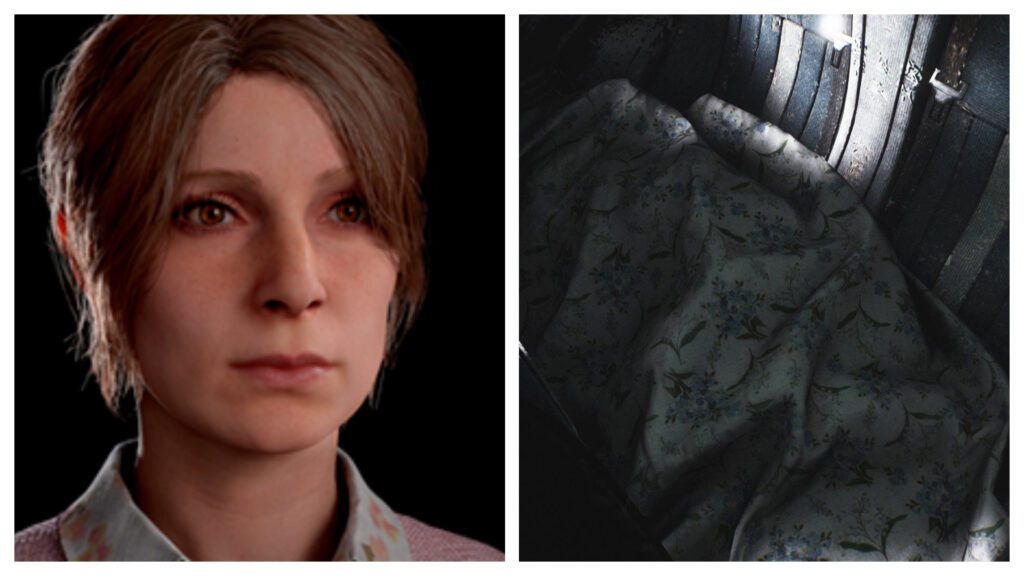
Much of Silent Hill 2’s praise regards its narrative as an excellent piece of the protagonist’s realization that his problems and trauma’s are his own doing: James Sutherland is a crappy husband and, in a given moment of life, kills his already sick wife Mary before driving to the game title’s infamous town.
“Driving” is the focus, here: one of gaming’s most well-known rumors was that Mary’s body was in James’ car all along, adding more allure to an already psychologically-driven plot.
Konami didn’t acknowledge this at the time, but never quite shot it down either: for some time, the whole “Mary is in the car” hoax was just that—a hoax. But one that aligned perfectly with one of the original game’s endings. The Japanese publisher even stated that none of the game’s endings should be taken as canon, since Silent Hill mostly thrives on the player’s own, individual perception of the events.
The company would only come forward in 2012, when Masahiro Ito confirmed: Mary was, indeed, in the car.
Then the remake came around. Mike’s playing right now for another story we’re developing, in fact (sorry for the spoiler’s, dude!). And within the new-old project, players could manipulate the camera on a particular driving session, to show just enough of a “human shaped object” draped in a blanket in the backseat, cementing as truth one of the most well-known and most interesting video game theories.
Far Cry 2’s Jackal is actually the previous game’s hero, Jack Carver
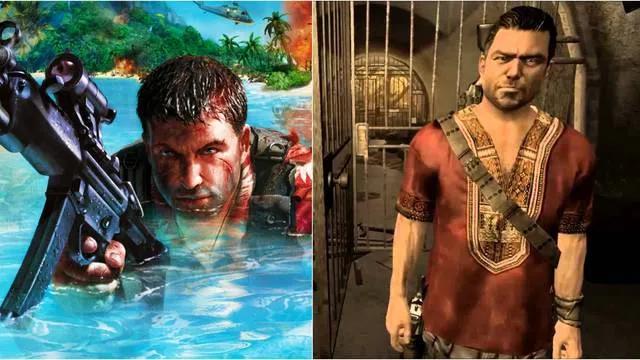
Far Cry is not the most narrative-driven game, but as first person shooters go, it’s plot is decent enough. One of Ubisoft’s franchise’s more enigmatic—and entertaining— aspects of its lore is the identity of the Jackal, Far Cry 2’s main antagonist. The game never outlines his backstory, stating only that he’s the arms dealer offering his products to both sides of a warring, unnamed African nation. The game even states that “every gun, bullet, and corpse is traced back to him.”
After the game’s ending, however, we learned that he’s far more nuanced and developed as a character, and that he’s not without much reason to become who he is. That, coupled with a handful of shots of his face, had fans coming up with a very interesting theory: The Jackal is actually Jack Carver, Far Cry’s first protagonist.
It is important to note that this connection was “somewhat” official, since Far Cry 2’s Creative Director, Clint Hocking, stated to IGN that Jackal was, indeed, thought of as “Carver 10 years later”. However, Hocking never cleared the air about Carver “being” The Jackal, or if Far Cry 2’ just created The Jackal “inspired by” Carver.
Most fans, though, seem to take this as a confirmation, so who are we to deny it?
The military tried to recruit you through video games
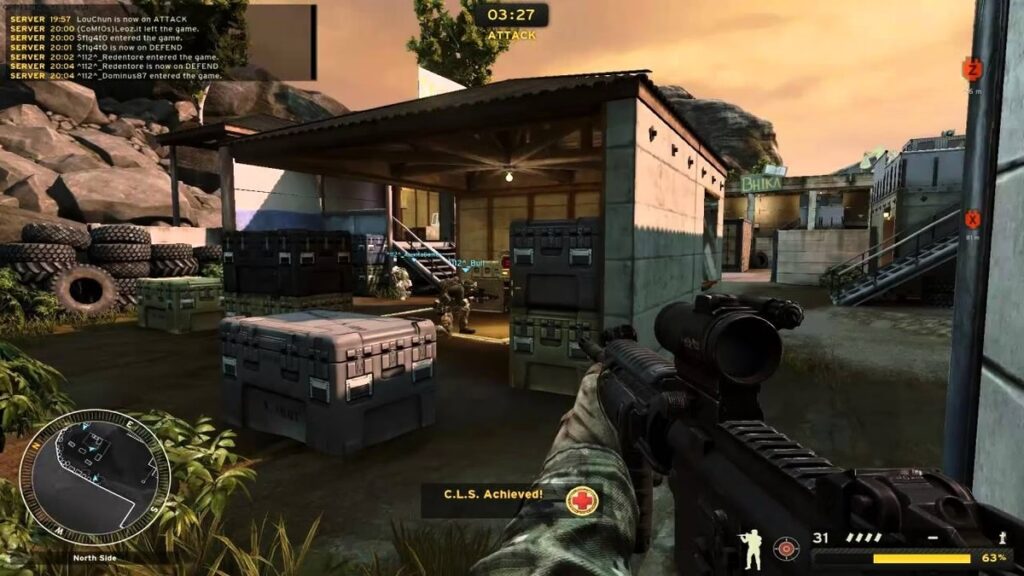
This is one of the most interesting video game theories as, since it’s been confirmed, takes place as a “from the outside in” type of thing: realizing the incredible potential of gaming in swaying opinions for and against military forces—courtesy of some very realistic pieces in games like Battlefield and Call of Duty, the United States Army invested dozens of millions of dollars (which, by their budget, probably means “a few cents”) to develop games.
Now, we’re not talking about things like “the military tracks gaming achievements to know potential recruits” or anything. That’s a gaming hoax all its own. Instead, we’re going for something more obvious.
That obvious being: America’s Army: Proving Grounds. The first and, that we know of, only game developed and published by United States armed forces with the goal of identifying valuable soldier prospects, through gaming.
The preamble to this is a bit more nuanced, but not much more so: there are, after all, a plethora of Call of Duty pros who believe they have the skills to be Jesus’ second coming in sniper form, a godly chosen one that will outshine all of the hard-hitted snipers currently out there.
Instead of shooting down—metaphorically speaking, of course—such drivel, the Army tried to capitalize on it, thus creating the aforementioned game: Proving Grounds was a free to play online and offline shooter that asked users to create accounts linked to contact information. This data would help officials track performance stats and, luckily, identify and approach those who excelled the most.
Granted, the game was very realistic in its physicality, and it’s not like it was one of those “old-geezer-tries-to-do-modern-shit” scenarios: within the ranks of game developers, there were people who worked on Call of Duty: Black Ops 2 and infinite amounts of money to hire for consultancy and technology—the game even had a level editor on its PC version.
Nowadays, the Army has shut down the project, albeit not completely: while the servers are off and most online capabilities have got the axe, it can still be downloaded and played offline on PlayStation (via PlayStation Network) and for Windows (Steam), and its level editor still works, somewhat. So, all in all, it became “just a game”.
Also, Poké-WTF???
MewTwo is partially human
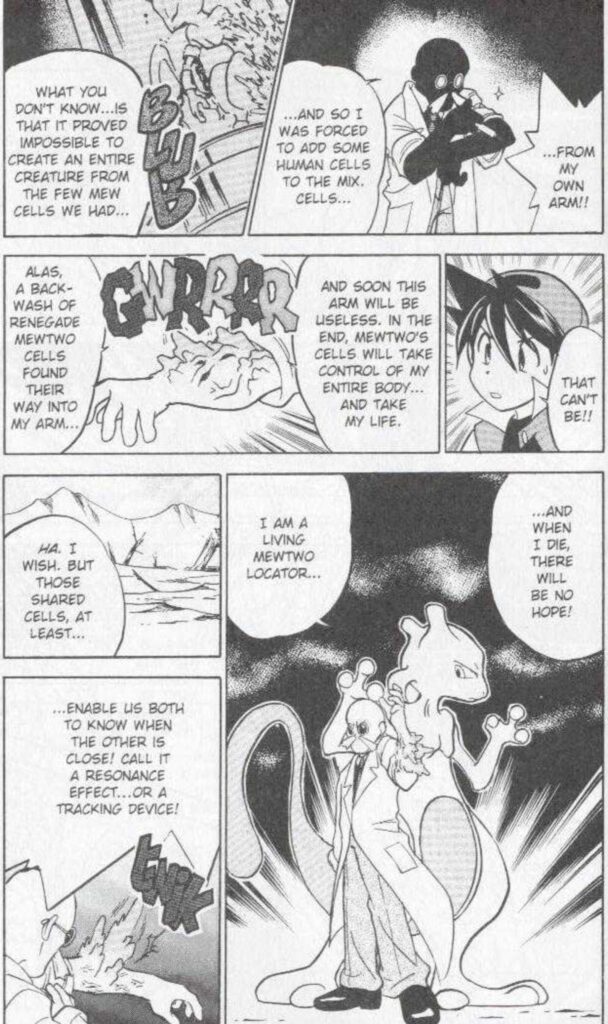
I’ll admit I was never big on Pokémon, and most of my knowledge about it comes from the very first season, the original 151 creatures and then I kinda stopped following it besides a few stories published here and there. So this one was a bit of a curveball for me: I always thought Mewtwo was a clone from Mew, and chalked up the fact that they look different to manga/anime magic.
Lo and behold, at a bar, a friend of mine who’s far more knowledgeable about Poké-things read a draft of this article—the Mewtwo thing was already here, but I was going to use it as a “maybe, maybe not” kind of thing, keeping the mystery. As it turns out, this friend showed me the manga pages that sort of confirmed it: a certain mad scientist from Kanto (y’know…that part where I stop following the brand completely) had part of DNA spliced on Mewtwo’s creation process—he himself being part of the group that made the monster.
Then, much like it always happens when stuff like this goes down, everything else about Mewtwo kinda started making sense: he’s got opposable thumbs, is capable of human speech and several other very human-like expressions that most other pokémon lack.
Granted, Mewtwo’s origins are kind of everywhere when it comes to detail, having a slew of different takes depending on the media he’s seen in. But since most of Japanese major franchises usually start in manga form, I’ll take that as the norm.
Pokémon has an actual church??
Yup. It’s called “The Church of Helix” and it is, since 2023, recognized as an official religion, with “Lord Helix” (occasionally referred to as “The Lord And Saviour”, “The Almighty Helix” “The Holy Helix” “The Helix God of All” and, more aptly, “Steve”).
It all started at a crowdfunded event called “Twitch Plays Pokémon”, where users from the now Amazon-owned platform would type commands in the chat to be reproduced in the game. You can immediately see how difficult this would be, as it took a little over two weeks for them to finish Pokémon Red. But that’s beside the point.
Due to the chaotic nature of this gameplay form, many things were happening in a way they wouldn’t normally: captured pokémons would be set free, items were largely being discarded—except one, called “Helix Fossil”. It didn’t take long for players to start calling the fossil a deity and, eventually, said item could be used to properly render players a new pokémon (Omanyte/Omastar, to be precise). And now, we have something religious to write about in PRG.
Granted, the Church of Helix (or “Helixism”) is not to be taken as seriously as, say, Christianity, Judaism, the Islam and whatnot. As part of the internet’s “meme culture”, though, it is surprisingly detailed in its projection: it borrows many of its elements from basic Christianity (Pidgeot, for instance, is “Bird Jesus”; Flareon is a false prophet and so on).
This wikia states in its very opening excerpts that Helixism has found its way on official registries, being now capable of tax exemptions and write-offs like most religions do. I couldn’t, however, find anything to confirm that. But hey, the Flying Spaghetti Monster has received some limited recognition and even celebrates marriages under its banner, so I wouldn’t be too surprised if it also happened here.

